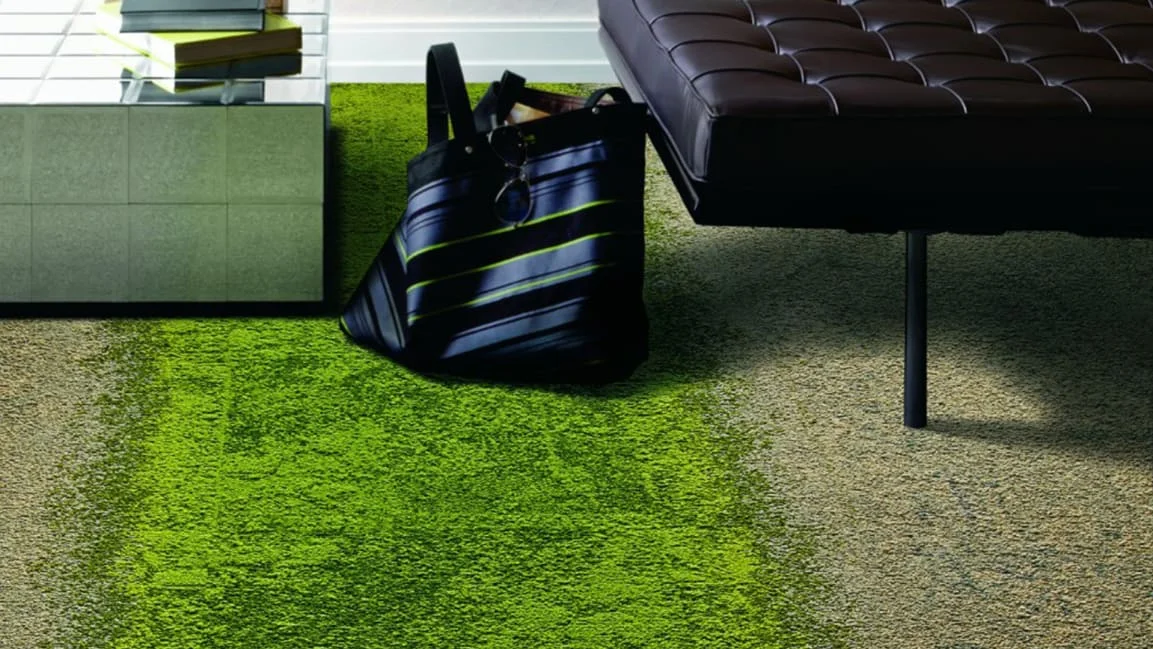We encounter carpeting every day, in offices, homes, stores–almost any interior setting. According to the Environmental News Network, carpets and rugs cover 70% of all flooring in the United States, a figure largely credited to the rise of corporate America and the white-collar workforce of the 1970s and ’80s. Much of that carpeting derives from vinyl, and until 25 years ago, hardly anyone was aware of the harmful effects of a petroleum-based production chain that releases hundreds of thousands of pounds of toxins and harmful chemicals into the environment and our bodies.
Nowadays, those risks are more common knowledge, largely brought to light by one of the world’s largest manufacturers of industrial carpeting, Interface Inc. Its late founder and chairman, Ray C. Anderson, made it a personal mission to set in place a “midcourse correction” of the industry that was his lifeblood–seemingly against his own business interests. But the new mission was a rousing success; under it, the company doubled its sales and profits.
Today, Interface faces competition from manufacturers who spot a business opportunity in environmentally minded flooring as climate change becomes an international crisis. In the absence of its founder, who died in 2011, will Interface be able to uphold his legacy?
A SPEAR IN THE CHEST EPIPHANY
Anderson spent more than two decades growing a modest operation into a global, lucrative billion-dollar operation. Then he began to steer his company toward radically sustainable practices in 1994, after reading Paul Hawken’s The Ecology of Commerce, which triggered in him a profound “spear in the chest” epiphany, as he said in a 2009 TED talk. Curious to know his company’s exact environmental footprint, Anderson had his engineers calculate the waste cost of its overhead, and was shocked by the findings: more than 1 billion pounds of raw virgin materials, a majority of it oil and natural gas, used to produce nylon and polyester-based textiles that were the backbone of his product line–not to mention the whole carpet industry. It was then that Anderson resolved to disrupt his own business model.
For the following 17 years, up until his death in 2011, Anderson worked to meet the requirements of Mission Zero, Interface’s program and pledge to halt the use and production of virgin materials by 2020. On his watch, the company launched the ReEntry buyback program, its first major sustainability initiative, in 1995. The program collects and reclaims post-consumer, vinyl-backed carpet tiles–whether or not they’ve been produced by their competitors–as a core source of its manufacturing process. The ReEntry program, which continues today, has since diverted more than 360 million pounds of carpet to date in North and South America. Such programs are fairly common in retail nowadays, but that wasn’t the case in 1995–and it made environmentalists hail Anderson as an unlikely hero of the sustainable movement.

